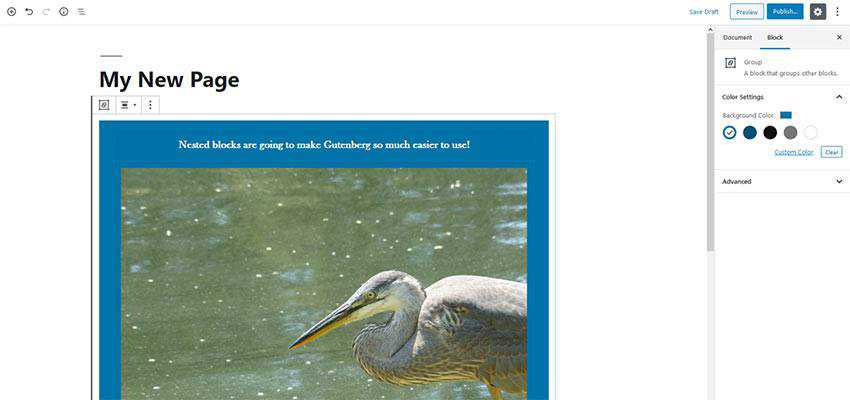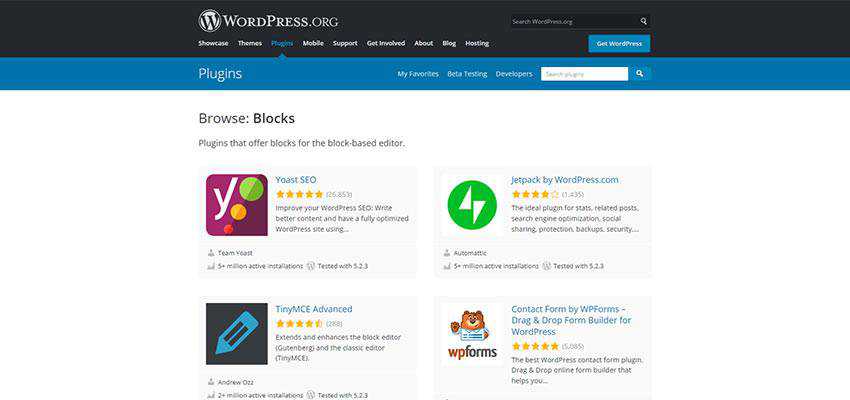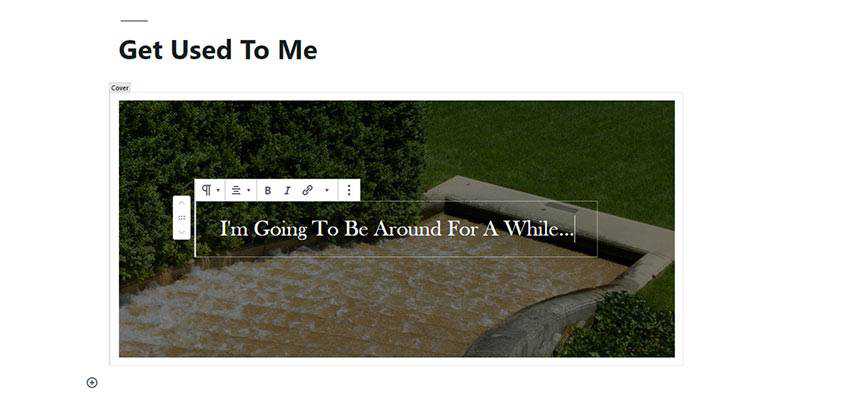It may be hard to believe, but the WordPress block editor (a.k.a. “Gutenberg”) has been in core for nearly a year. The massively-overhauled editing experience was officially released to the public on December 6, 2018 as part of WordPress 5.0.
The time leading up to that release was a stressful one. Those working on the Gutenberg development team were feverishly squashing bugs, while the rest of us braced for the unknown. There were arguments, controversies and ultimately: A release.
So, how did it all turn out? Or, should I say, how are things going so far? From my own experiences, here are a few thoughts as Gutenberg approaches its first birthday.
The Sky Didn’t Fall
Perhaps first and foremost, it’s worth noting that earth is still spinning on its axis. And the rampant fears of sites breaking en masse didn’t take place.
Of course, I’m referring to one of the biggest (or, at least, loudest) concerns: That Gutenberg would negatively impact existing websites. The thought was that, once WordPress 5.0 hit the streets, we’d have an almost Y2K-like situation where things simply wouldn’t work.
That’s not to say that some sites out there didn’t face issues. But, personally, I can’t say I noticed much of anything. Part of this is the availability of the Classic Editor plugin, which essentially keeps the same editing experience. But upgrading to 5.0 by itself didn’t seem to create any issue whatsoever for the sites I manage.
And, because of the aforementioned Classic Editor, users haven’t been forced to change their workflow. The plugin will be around until at least the end of 2021. And with over 5 million active installations, it would seem likely that it will remain an option even further into the future.
So, even with all of the fuss, the post-5.0 world was pretty much business as usual. That in itself should be considered a victory for WordPress.

The Editing Experience Is Improving
If you were among those who tested Gutenberg via the pre-release plugin, you might have wondered about its overall stability. To some (myself included), it just didn’t seem ready for prime time.
To put it bluntly: There were bugs. The ability to easily select a specific block, for example, was a challenge in certain situations. While there weren’t necessarily any show-stoppers, putting a page together could be a frustrating experience.
However, the number of quirks has lessened over time. Each new update seems to make the process of content creation a little bit better. And while Gutenberg still isn’t as sharply intuitive as some of the market-leading (and admittedly more mature) page builders available, it’s getting there.

The Number of Blocks Is Growing
As for available features, that’s also an area of continuing growth. While new blocks are being added to Gutenberg in core, you can also gain access to these goodies beforehand via the aforementioned plugin. Some additions, such as the very handy nested blocks, add a welcome new layer of layout control for content creators.
But the true strength of WordPress has always been its community. And that point is underscored by the number of plugins offering either new block types or those making existing features Gutenberg-friendly. WordPress has even introduced an area of the Plugin Repository to highlight them.
It’s now possible to add blocks for a number of different content needs and even building your own has become easier, thanks to plugins such as Advanced Custom Fields and Block Lab.
Again, this is not a true page builder experience – and that’s not necessarily a bad thing. The approach is that we essentially start out with a small number of blocks, then add premade and custom modules to the mix as needed. This is opposed to a page builder that includes tons of features – many of which we may never actually use.
This really isn’t dissimilar to the process we’ve followed for years. By itself, WordPress core provides the essentials and it’s up to us to build from there. While it may be nice to have certain blocks added to future core releases, it’s also important to avoid excessive bloat and clutter. It will be interesting to see how this balance is maintained over time.

It’s Here to Stay
It’s safe to say that Gutenberg will be with us for a while. In fact, according to the WordPress Roadmap, it will continue to be further integrated into the overall user experience.
That work includes tweaks that allow for more feature-rich themes (Phase 2), collaboration and multi-user editing (Phase 3) and support for multilingual websites (Phase 4). In total, this likely adds up to several years’ worth of development.
This is a huge positive, as it requires a real commitment to do this right. As I write this, the editor itself is vastly improved over what it was at launch. Yet, it still has a way to go in terms of being a must-have feature to draw new users into the WordPress ecosystem while making sure current ones don’t abandon ship.

Final Thoughts
One truism loomed large in the time leading up to Gutenberg’s initial release: Change is difficult. And when making a major change to a widely-used piece of software, there’s going to be pushback. Not to mention a dose of panic and even the occasional conspiracy theory.
For all of that, I’d say Gutenberg has managed to have a pretty good first year. No, not everyone is thrilled with it. And there will continue to be those who squeeze every last drop out of the Classic Editor – even for newly-built websites.
But this is really about the bigger picture. It’s about raising the bar in terms of what is possible with a default installation of WordPress. Gutenberg is a tool for adding common design and layout elements to content. And, true to what this CMS has always been about, you can expand upon it as needed – or bypass it completely.
I think one of the common misconceptions about the block editor is that it was supposed to be a complete, one-size-fits-all solution. Some may have looked at it and said, “My page builder is better”, and that may be so. The great thing is that you have the option of using that page builder, if it’s a better fit for your needs.
That being said, we are still in a bit of a transition period. Not everyone has jumped on board, and the tool itself still needs more refinement. But, as they say, Rome wasn’t built in a day. The same can be said for a block editor.
Related Topics
Top